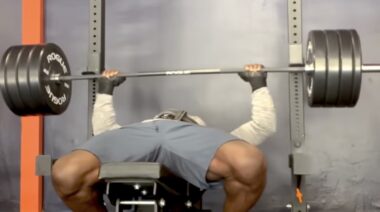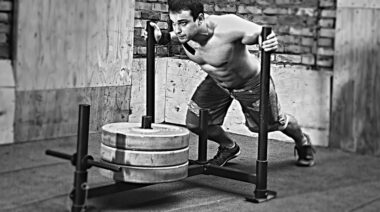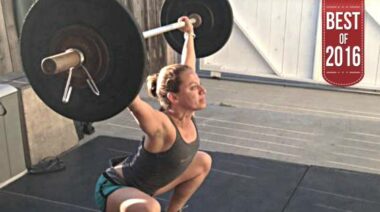“Put your game face on!”
“Train like your life depends on it!”
“Practice like it’s game day!”
These are all phrases we coaches bark at our athletes. Like most of the things we say, our athletes tend to let it go in one ear and out the other. But there is a solid layer of reasoning behind these statements that goes beyond the anecdotal wisdom that we are trying to impart.
All of my football guys out there, especially those who are tied to a team currently: Think of the cramping episodes you’ve had. They nearly always happen during the first few games of the season, yes? I know in my experience, our first game is one where I have to patrol the sideline like a pit bull, stretching random kids who are catching cramps. Seriously, we can have up to a dozen cramping episodes on a given Saturday, early in the season. But as the season wears on, these incidents nearly disappear. So what gives?
Why Do We Cramp?
The science on cramping is all over the board. Back when I played, our sports medicine people would blame it on inadequate hydration. That single reason stood alone for what feels like eons. It was so pervasive that products like Gatorade and Power Aid have multimillion dollar businesses centered on the re-hydration market. It could even be said that they are the reason that research into cramping has moved so slowly. Rehydration and its effects are big business, and what would happen to their bottom line if someone began to create cracks in the efficacy of their products?
For decades, we have been forcing electrolytes and fluids down the gullets of our athletes to keep them from cramping. And for years, we have still had kids who go down on the field, or tap their helmets to come out because their calves or hamstrings are locking up. We’ve known that something else is going on, yet we continue to be married to the idea that there is an electrolyte imbalance, and if we could get just a little more magnesium, sodium, and potassium in the body, the cramping will stop. Mustard (MUSTARD!) is the new thing on the sidelines. The super high sodium content, along with a couple of other ancillary ingredients, supposedly is the magic sauce to stop the cramping.
Could you imagine being in level 10 pain, writhing on the ground, and the solution was to shoot a quarter bottle of mustard in your mouth? No thanks.
If you don’t practice how you want to play, don’t be surprised at the problems you encounter on game day.
The Unique Stimuli of Game Day
In August, I heard Dan John speak on a small concept that blew me away. Something that we all know about, but few of us have taken the idea the full distance. The idea of arousal.
Let’s think about the word arousal in the context of performance. When we get ready for competition, there are levels of anxiety, stress, and excitement that inherently come with competition. This degree of stimulation affects everything you do with performance. Dan was talking about throwers who would be able to hit personal bests in practice as they were peaking for competition. When the big event would come around, the addition of the stressors mentioned above would topple the system and they would under-perform. The convergence of the day with the new stimulus that is inherent in formal competition becomes too much for the nervous system, and the performance itself suffers.
If we apply Dan’s ideas on arousal to the cramping situations above, we find the same laws at work. Take for example our star linebacker here at Cal Poly, Josh Letuligasenoa. Josh is a physical phenomenon. He’s broken several decade-old strength records at our school, he is one of the most athletic big men I have ever coached, and is likely going to get a shot at playing on Sundays this coming year. Josh is also one of the calmest guys you will meet. Soft-spoken, insightful, and tough to get too excited.
But he’s one of my cramping guys. See, Josh is moderate in every aspect of his life, except game day. Then he becomes someone else. I know this about him, so our first game I grabbed him on the bus to the stadium and told him he’s not allowed to get too hyped up prior to kickoff, and to keep a lid on the excitement until I tell him to let it fly. Then during warm ups, I look over and he’s jumping around, hooting and hollering and doing excitable things you never see from him. Once the game began, within a quarter, he was on the sideline, cramping.
On the flip side, there’s me. I played college football at Eastern Kentucky University in the late 90s. I was a decent athlete whose game revolved around my strength, quickness, and smarts. I had moderate success, winning one conference championship. I was the opposite of Letuligasenoa. I never got over-excited. I was the poster boy for calm and collected. Yes, I could feel the significance of the game, but I wouldn’t allow myself to get overly excited. Therefore I never had cramping episodes.
Arousal, the CNS, and Cramps
The arousal of game day puts a massive load on the central nervous system (CNS). If you think of a volume knob on a stereo, a normal day is about a three. Depending on your level of excitability, the gravity of competition can take the knob to a 10 in a hurry (or even to 11, for those of us who are so inclined). When the nervous system is not accustomed to working at that volume, the fatigue hits much harder, and much faster. If we think about training or competition from an adaptation perspective, most of these athletes are unaccustomed to working at this level of effort. This alone is the reason we see cramping so frequently at the onset of a season. After game four or five, the nervous system becomes conditioned to the weekly spikes, and adjusts accordingly.
Or look at the performance Matt Frasier had at the 2016 CrossFit Games. He won the entire competition on the second to last workout (from a points standing)—something this event has never seen. He blew the field away with one of the most iconic performances in all of sport. Without speculation of any kind regarding his preparation, I can make one certain observation:
Matt Frasier has been on the mountain top for years now. He has been on the podium several times, so he knows how it feels to be in the hunt. Therefore, Matt was able to train in a way where his body, and more specifically his nervous system, was familiar with the magnitude of the event itself. I haven’t heard any stories about his training, but I’ll bet my reputation that he is able to get himself into a “Games” type of mindset that allows his nervous system to adapt to a level beyond his competitors. So when he took the field on day one, his level of excitement for the event was commonplace for his CNS.
If You Need It on Game Day, Find It in Practice
If you are a competitive athlete, you have to take into account your exposure to competition intensity in your training regimen. If you know you are a person who “gets up” for game day, you are going to have to include a degree of competition-level efforts in your training to allow your body to prepare and adapt correctly.
I read constantly. What I’m seeing in the literature from many areas is the notion of not allowing yourself to get too geeked up during your training. Don’t thrash the heavy music, don’t stalk to equipment, and don’t become an animal when you train, they tell us, due to the fear of injury. My question is, why not? Especially if you have to go into hunter mode during competition. In fact, if that is the mentality you must carry onto the field, you’d better find some of it during practice. We have to practice or train like its game day—our CNS depends on it.
How can you find that game-day intensity in practice?






